The Things Everyone Should Know (But Don't)
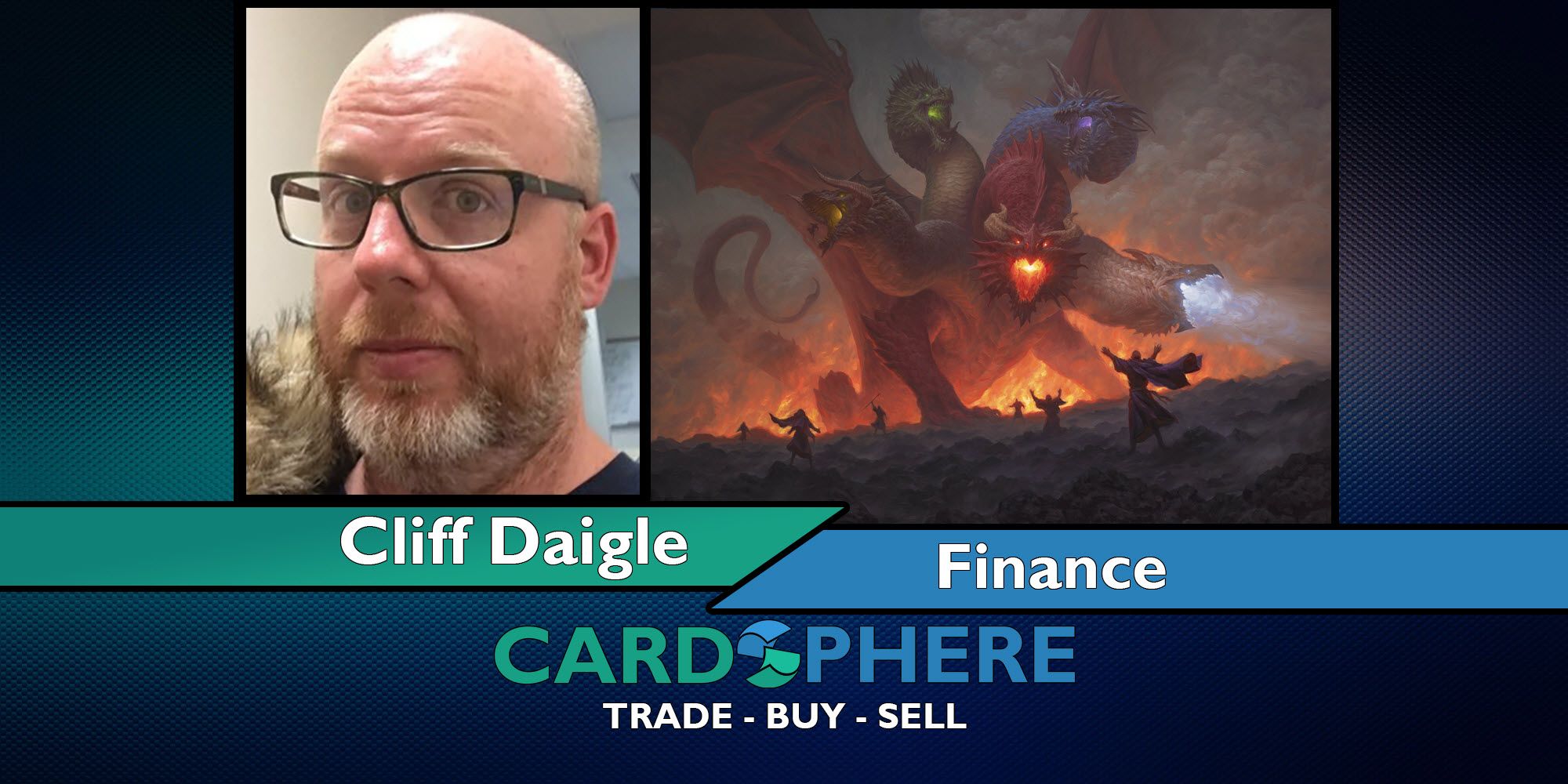
I have been buying and selling Magic cards via assorted routes for more than twenty years. I collected them, and traded them, but it wasn’t until 1999 that I had to sell a big part of my collection for the money I needed to fix my transmission. Thinking back (I didn’t keep records then) I believe I sold a set of Tropical Island for $100, all four seasons of Mishra’s Factory for another $100, and a Library of Alexandria for about $150. I could be misremembering some of those, please don’t fault my memory here.
What I gained, besides a new transmission, was the understanding that if I did things right, not only would I be able to have my Magic habit pay for itself, but that I would accrue value over time, to be withdrawn as needed. I’ve done that with gusto, using the proceeds from Magic to pay for a security deposit, a memory foam bed, and even a lawyer.
However, because I’ve been at this so long, there’s basic rules that I have not always bothered to talk about, because it’s so, well, basic. I presume a level of knowledge that not everyone has, especially folks who are new to the game or who have picked up Magic during the pandemic, and aren’t used to the rules that paper Magic plays by.
The graph of a set’s value over time (generally presumed to be the cost of one of every common, uncommon, rare, and mythic) is almost always at its highest right before its release date. Here’s Core Set 2021:
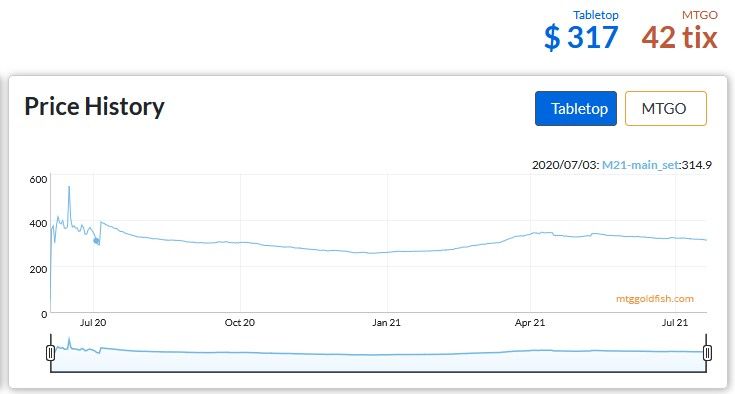
Now, there are factors to keep in mind with most recent sets. Strixhaven has the Mystical Archive affecting overall value. Zendikar Rising has a set of Expeditions that show up and help sealed box prices. Some sets, like the new Adventures in the Forgotten Realms, don’t have anything extra going on.
For Cardsphere users, this means that you want to be selling cards right away, as soon as you get them into your hands.

This first week of a set, between prerelease and when vendors are legally allowed to send you cards, is a time of great potential. Someone wants that mythic which will soon be bulk. People who are in a hurry to get cards literally do not care that the cards will be cheaper in a month or six weeks. They want it NOW.
Oblige them.
Please note I’m not saying the percentages will necessarily be higher--the base values themselves are higher, and your profits greater.
Let’s use an example, a card I desperately want for my Ur-Dragon Commander deck: Tiamat.
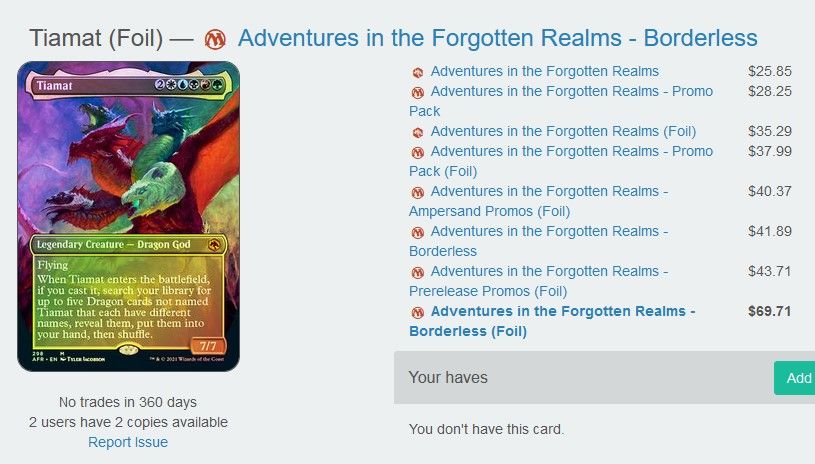
Right now, this oh-so-pretty-and-even-more-powerful card will cost me X percent of about $70. That’s not going to last. Cards get cheaper when the set releases, and there’s two waves of product to be aware of: Release weekend, when the big vendors open enormous amounts of product and put it all on TCGplayer and eBay, and then the following weekend, when individuals get their sealed product (which was shipped a week prior) and begin undercutting each other to sell what they can.
In Tiamat’s case, there’s a very good chance that this is the chase mythic of the set, and since there’s no demand outside Commander (and almost all as a Commander, or like me as the 99 for the Ur), I’m expecting it to fall farther, to somewhere in the $40 range for the borderless foil in a few weeks. You can already get some of the Planeswalkers from this set in borderless foil for under $15, and yes, those can go even lower.
The graph over a long time for the price of an individual card tends to follow the graph of Foil Phyrexian Vorinclex, Monstrous Raider:

We see the price at its highest early on, but as the early birds get their copies, the price will dwindle lower. This does not continue indefinitely, though: something might happen to cause a spike in prices, perhaps a new combo or a new Commander that loves the card.
Cards increase in value due to one of two factors: gradual demand from one or more formats, or a brand new interaction that unleashes furious demand and a fear of missing out. An example of this growth over time is Fiery Emancipation:
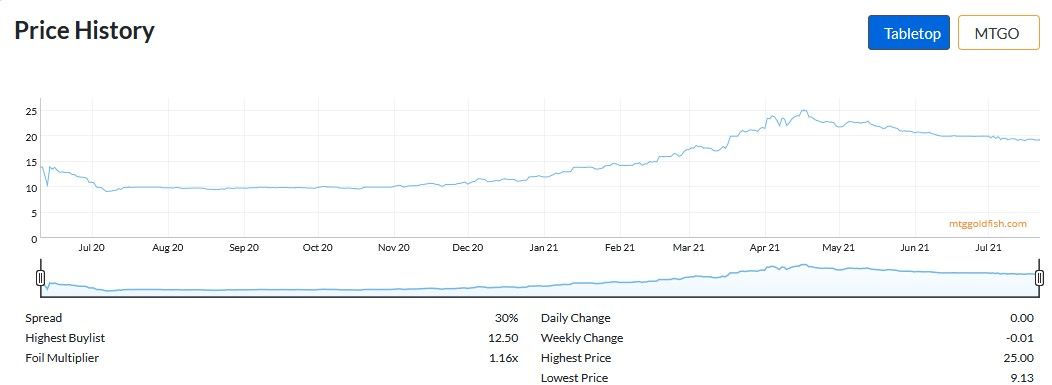
Strong EDH demand has brought the price on this up, and that means the price will stick.
When a spike happens, you want to sell into the hype. Let’s look at a recent one in Earthcraft:
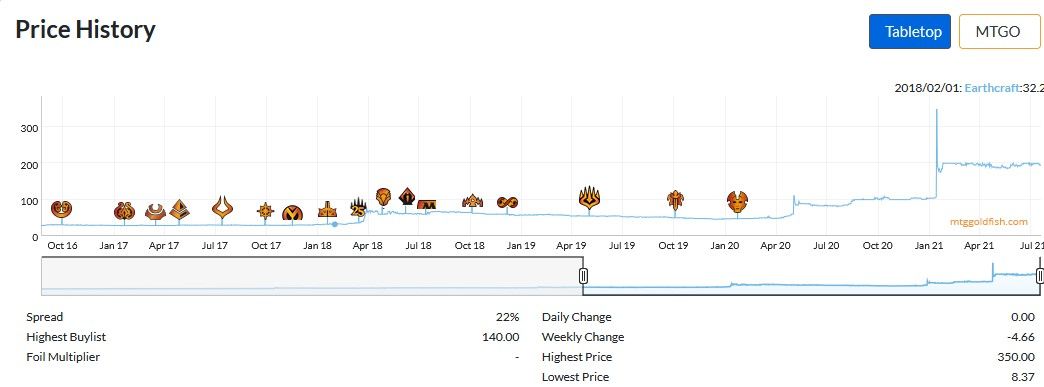
There was not a single card/combo/interaction that caused the price to suddenly grow, and because there wasn’t that sustained demand, the price fell back down... but not completely. Over time, without another incident, the price might drift back down to where it was, but that’s pretty unlikely.
If you have a card like this, and a spike happens, sell. Don’t stress about getting the max value, focus on the value that you’re gaining and what you’re going to do with that profit.
For cards that are in War of the Spark and before, the foil multiplier of 3x is your baseline for value. If the foil is less than three times the value of the nonfoil, then it doesn’t see much demand in Commander or Cube which are the primary drivers of foil values (e.g. Dragonlord Silumgar, who’s barely 2x the foil). But if the multiplier is higher than 3x, you know that it’s a very popular foil in those formats (`Explosive Vegetation`).
Finally, there was a time when Magic sets were released as three in a block. Champions of Kamigawa-Betrayers of Kamigawa-Saviors of Kamigawa is one example. For sets laid out that way, because the print runs and set sizes were so different, there was a rough ratio of 6:2:1 for figuring out the relative rarity of a card. There are roughly 6x as many Champions rares out there as Saviors rares because of how drafting went: for three months it was CHK-CHK-CHK, then three months of CHK-CHK-BOK, then three months of CHK-BOK-SOK. This means that if a card is from the middle or last set, you know it's that much rarer and potentially that much more valuable.
As an example, barring reprints, there are about six times as many Blatant Thievery out there as there are copies of Stifle, because the former is from the big set of Onslaught and the latter is a rare from the third set in that block, Scourge. Demand patterns and reprints affect the prices differently, but make no mistake: Rares from Khans of Tarkir and earlier were distributed in different amounts depending on their position in the three-set block. Don't take the modern experience of all rares being equal and apply it too far back.
